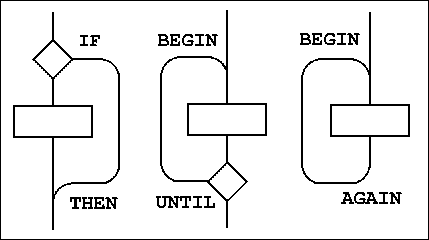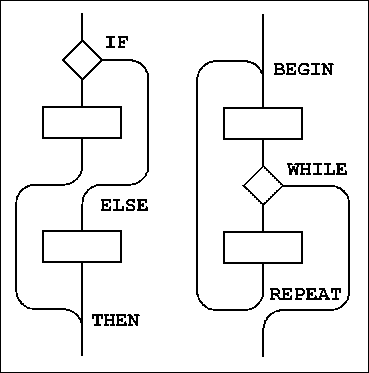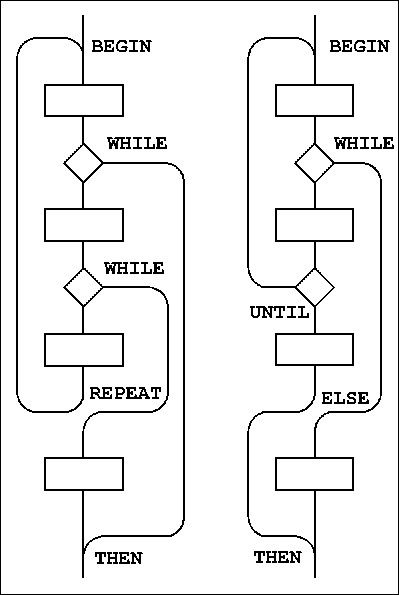 |
|
|
| |
 |
CONTROL STRUCTURES
DEFINITIONS
|
n2
n1 DO . LOOP
|
Loop n2-n1
times, maximum 65536 times but will always loop at least once. Index starts
with n1 and increments at LOOP each time
around.
|
|
n2
n1 DO . n3 +LOOP
|
Similar but
index increases by n3 each time giving a maximum number of loops of
INT((n2-n1)/n3)
|
|
BEGIN . f UNTIL
|
Loops until f is
true (non-zero).
|
|
BEGIN . AGAIN
|
Indefinite loop
used only as top level of hierarchy of software, such as the word entered at
power-up or the word executed by another task.
|
|
BEGIN . f WHILE . REPEAT
|
Most general of
loops. Circulates around BEGIN and REPEAT until f is
false, when execution jumps from WHILE to
after REPEAT .
|
|
n
IF . ELSE . THEN
|
Executes code
from IF to ELSE if
n is true, otherwise executes the code from ELSE to THEN .
|
|
RECURSE
|
Execute the
current word definition, occasionally preferable to loops.
|
|
CASE
w OF . ENDOF
|
Executes one of
many possible sections of
|
|
x OF . ENDOF
|
code. nx
represents possible value(s)
|
|
y OF . ENDOF
|
of n. cond is
any conditional such as
|
|
. (more if needed) .
|
> = or < . See example in WORD LIST, page 380.
|
|
DUP nx cond IFCASE . ENDOF
|
|
|
. (default if none of above) .
|
|
|
ENDCASE
|
|
OVERVIEW

Basic control flow patterns
|

Additional basic control flow patterns
|

Extended control flow patterns
|
The three diagrams illustrate control flow. Note the
multiple exits from loops in the last two cases. See USING FLASH CHIPS, page 281, for an example. Even these
structures exist in equivalent assembler versions.
|
 |


